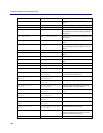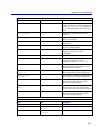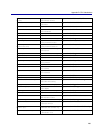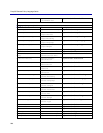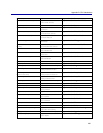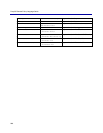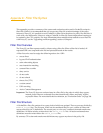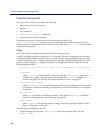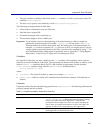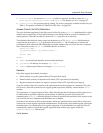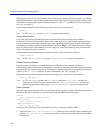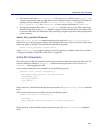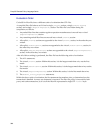
Appendix E: Filter File Syntax
This appendix provides a summary of the syntax and evaluation order used in CacheOS version 4.x
filter files. While it is recommended that you convert any filter file to take advantage of the policy
features of ProxySG, it is possible to use a CacheOS 4.x filter file in the place of a policy file, and have it
work with a few differences. However, using a CacheOS 4.x filter file causes deprecation warnings to
be emitted by the CPL compiler. For more information about modifications needed to use a filter file
with ProxySG, see the “Upgrading and Downgrading” section of Chapter 1.
Filter File Overview
The ProxySG can filter requests made by clients using a filter list. When a filter list is loaded, all
requested URLs are compared to the list and processed based on the results.
A filter list can be used to assign the following actions for a URL:
• access direct
• bypass LDAP authentication
• cache advertising objects
• case-insensitive matching
• content-filter override
•deny service
• do not cache
•do not refresh
• time to live (TTL)
•version control
• URL rewriting
• Active Content Management
Important: The ProxySG does not evaluate items in a filter file by the order in which they appear;
instead, prefix filters are evaluated first, then domain suffix filters, and lastly, regular
expression filters. For more details about evaluation, see "Evaluation Order" on page 306.
Filter File Structure
A CacheOS 4.x filter file consists of two parts, both of which are optional. The two parts are divided by
a
define_actions line. The first part, which can be considered the filter part, consists of filters and
access-control list (ACL) definitions. The second part, or action part, contains action and transformer
definitions. All filters must be written above the
define_actions line. All action and transformer
definitions must be written below the
define_actions line.
By contrast, CPL action and transformer definitions may appear anywhere in the policy file.




